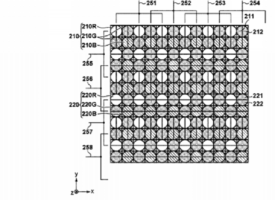L
Loswr
Guest
No, it’s not – they function in the same way. Both DSLRs and Canon MILCs use phase detect AF (PDAF). Mirrorless cameras can also use contrast detect AF, which is substantially slower but can be more accurate.I don't understand what you're saying about AF and crosstype. Why would you bring up a type of AF that can only be compared across DSLR models, and then say mirrorless doesn't have that. Mirrorless is literally an entirely different AF...
Canon’s dual pixel AF (DPAF) is the AF technology used in their MILCs (and in Live View on newer DSLRs) and uses split pixels to detect the phase difference, whereas DSLRs in viewfinder shooting use a dedicated AF sensor with paired line sensors. But DPAF is still phase-detect AF, the principle is the same – using the phase difference to determine the magnitude and direction of movement needed to achieve a match in phase (which is ‘in focus’).
With DPAF, the pixels are all split in the same direction, meaning they only detect phase differences in one orientation. Similarly, line-type sensors on a DSLR only detect a single orientation. If you've been in photography for a while, perhaps you remember the split prism in the middle of the focusing screen of a manual focus SLR. The 'split' was horizontal, so you had to look for a vertical feature to focus on for the prism to be effective. That's an analogy for how phase-detect works (except the DPAF pixels are split vertically, meaning they detect horizontal features only).
The dedicated PDAF sensors in very early DSLRs had only one direction of sensitivity like Canon's current MILCs, but soon they added line pairs in the orthogonal direction, first for just the center point, later for other points as well. The two pairs of line sensors at 90° to one another form a cross-type AF point that is sensitive to both horizontal and vertical features, and that's something that the DPAF used in Canon's MILCs cannot do, i.e. it is an advantage of DSLR AF. Even newer/higher end Canon DSLRs added diagonal crosses as well.
On the flip side, those AF point line pairs on a DSLR AF sensor are a fixed distance apart. That distance determines both the maximum lens aperture needed to use the AF point, and also the accuracy of that point. Those aspects are inversely related – the wider the baseline, the larger the lens aperture needed to use the AF point. So, there were f/5.6 AF points that were less accurate but worked with all EF lenses, and there were f/2.8 AF points with a wider baseline and greater accuracy that only worked with fast lenses. With DPAF, since all of the image sensor pixels are effectively AF points, they work with narrower apertures, which is we we're seeing f/8 and even f/11 max aperture lenses for MILCs.
Canon has a patent on a sensor with adjacent pixels split in orthogonal orientations, which will give MILCs cross-type focusing if/when implemented.

But until then (or until quad pixel AF, which would accomplish the same goal by splitting every pixel both horizontally and vertically), cross-type AF and the ability to focus on features of both horizontal and vertical orientation remains an advantage of DSLRs over MILCs, at least in a technical sense. Given that most things in the real world have features that exist in multiple orientations, the single-orientation DPAF focusing will do just fine in most situations.
Upvote
0
